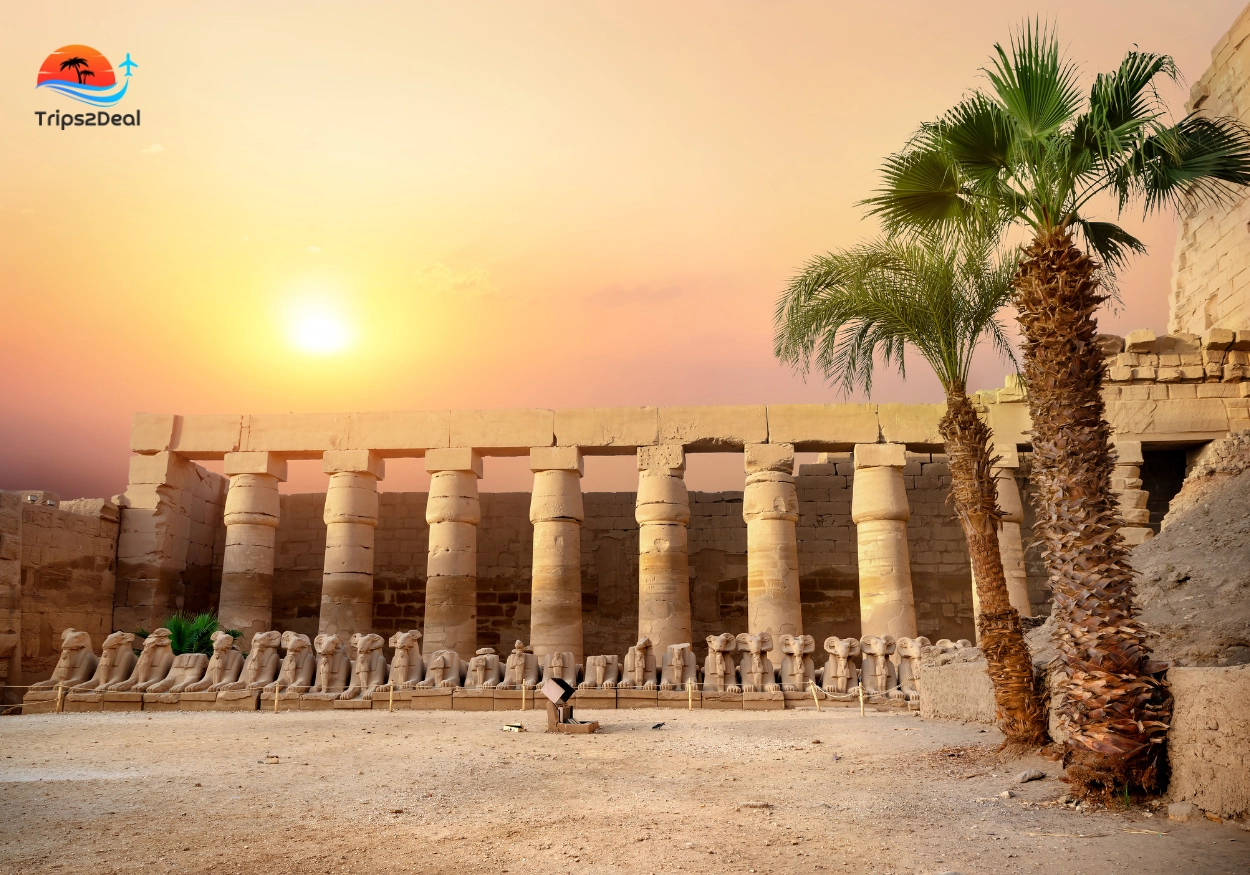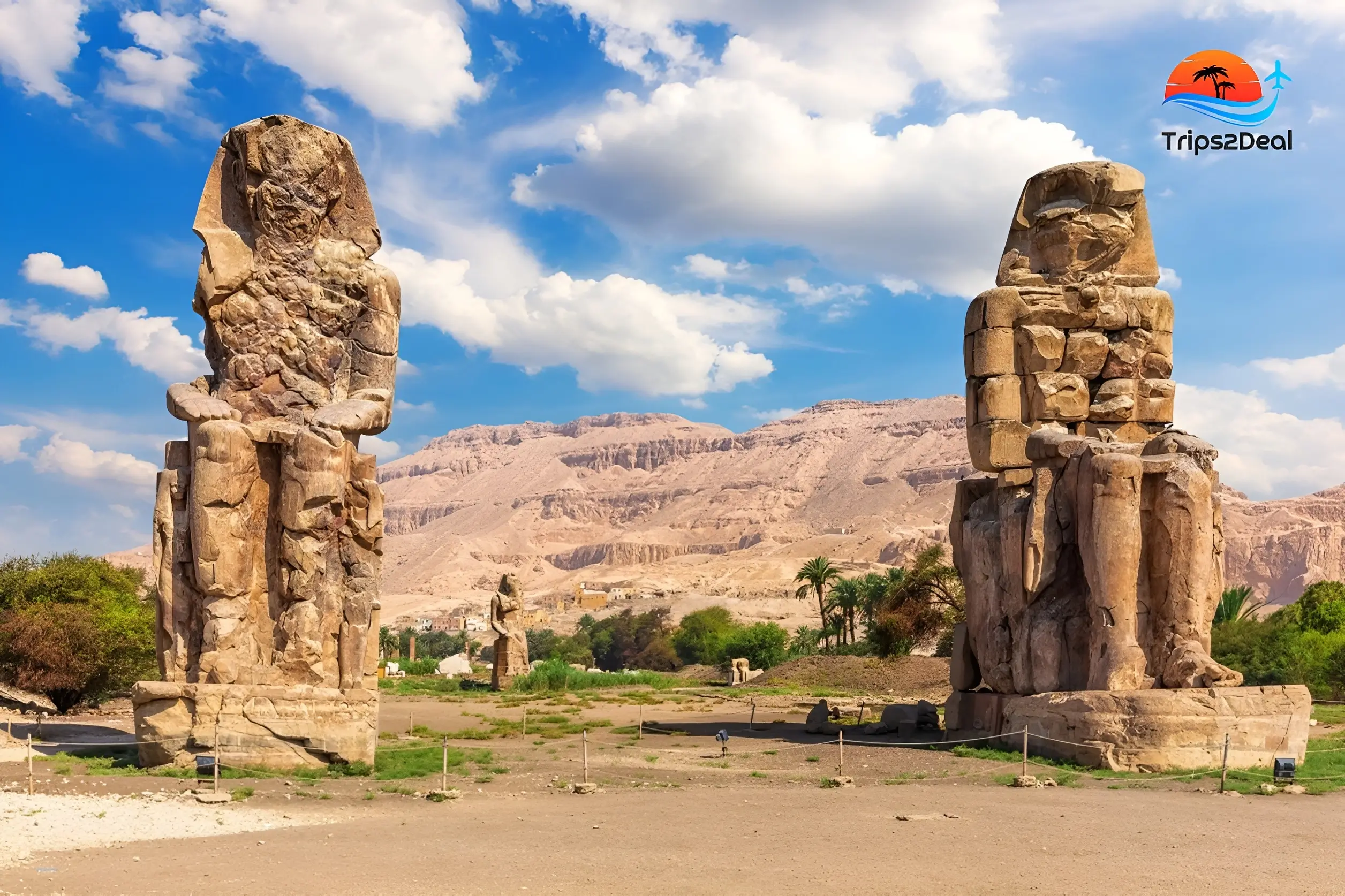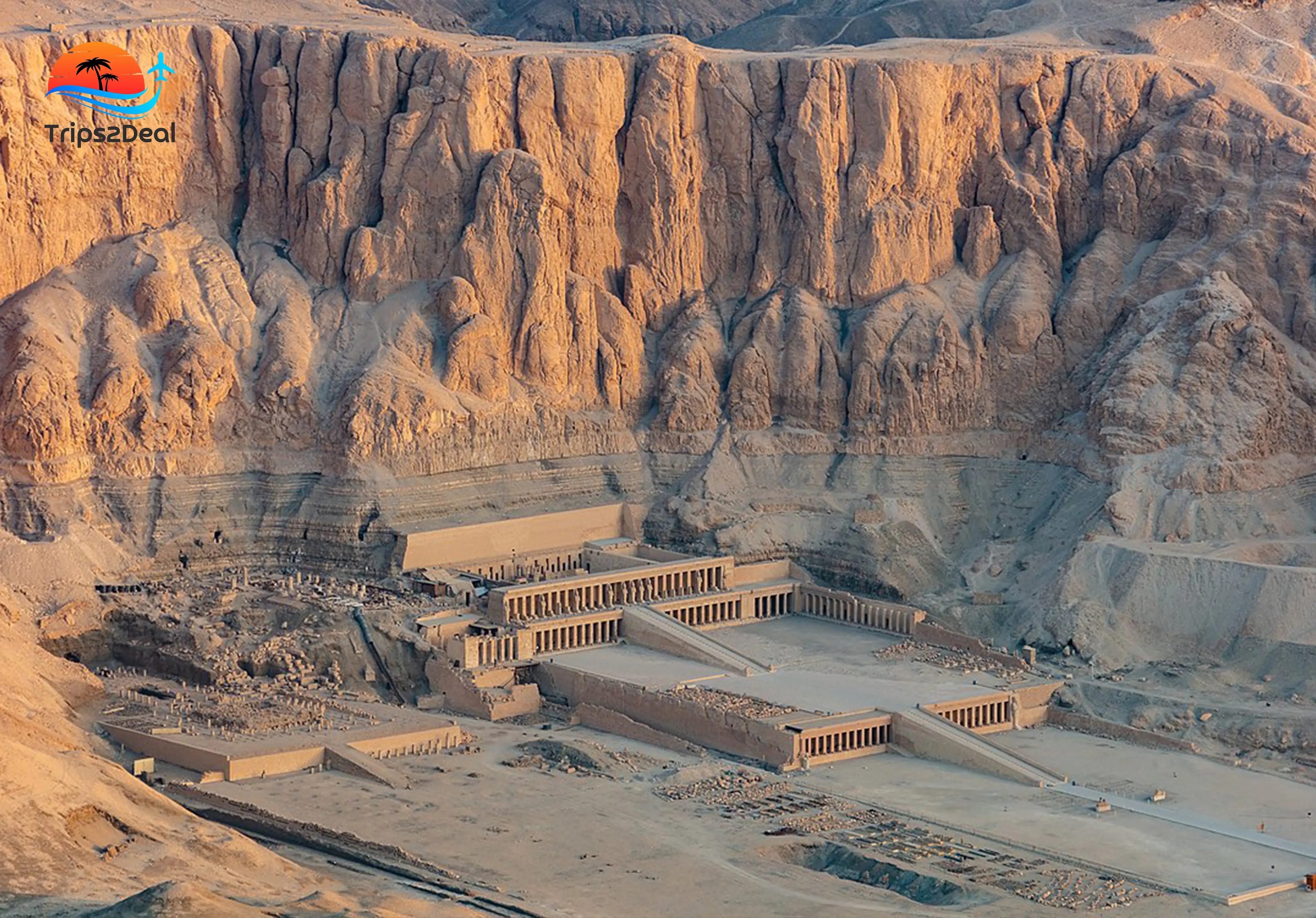Blogs

Exploring the Ancient Temples of Luxor: A Historical Journey
The city, which is on the eastern bank of the Nile River, has some of the most magnificent temples and monuments from the New Kingdom period. From the splendid Karnak Temple Complex to the peaceful Luxor Temple, each structure is a narrative about pharaohs, gods, and a civilization that historians and travelers have been interested in for centuries. Therefore come with us as we take you through an historical journey of ancient temples in Luxor as we unravel its mysteries and wonders.
1. The Magnificent Karnak Temple Complex
Karnak Temple Complex is one of the largest temple sites in Egypt if not the largest temple site in Egypt with enormous grandeur. It covers over 200 acres and was built over a period of 2,000 years by many different rulers or pharaohs. Its complex is devoted to the Amun-Mut-Khonsu Theban triad with hundreds of pylons, chapels, and obelisks.

Key Highlights:
- The Great Hypostyle Hall: This iconic hall contains 134 massive columns arranged in 16 rows intricately imprinted with hieroglyphics as well as reliefs.
- The Sacred Lake: This large man-made lake serves religious purposes and brings calm to this part of the complex.
- The Obelisks of Thutmose I & Hatshepsut: These huge stone pillars are a testament to Egyptians’ engineering ingenuity during that era.
Day trip : Explore Luxor Temples in a day trip
2. Luxor Temple: A Testament to Pharaohs and Gods
Located in downtown Luxor city, Temple of Luxor stands out among other ancient Egyptian architectural structures. Unlike other gods-dedicated temples, it was chiefly designed for kingship rejuvenation where several pharaohs ascended their thrones here.
Key Highlights:
- Avenue of Sphinxes: Once there were sphinxes statues on both sides along this great avenue running from Luxor Temple to Karnak Temple.
- Colonnade of Amenhotep III: These exquisite carvings adorned this majestic series of columns leading to the inner sanctuaries.
- Sun Court of Amenhotep III: A quiet open space surrounded by double rows of papyrus columns, tends to reflect the grandeur of Luxor temple.
3. The Colossi of Memnon: Guardians of the West Bank:
The Colossi of Memnon are two gigantic stone statues at the western bank of the Nile River representing Pharaoh Amenhotep III. They were 18 meters high and have been considered as symbolic images for ancient Egypt throughout history.

Key Highlights:
- Historical Significance: Formerly part of a mortuary temple, these statues depict the pharaoh in a seated position gazing towards the rising sun.
- The Singing Colossus: In ancient times, one statue would produce a musical sound at dawn which was believed to be that of the pharaoh himself. This was due to a reaction of the stone with air in the early morning, thus creating an atmosphere full of mystery and charm for those who came early enough to witness it.
4. Medinet Habu: The Mortuary Temple of Ramesses III
Situated on Luxor’s west bank is Medinet Habu, which constitutes Ramses’III mortuary temple regarded as one the most preserved and complete temples anywhere in Egypt. It is known for great architecture and scenes depicting military victories achieved by Ramses III.
Key Highlights:
- The Great Pylon is the main entrance to the temple, which boasts of scenes depicting the pharaoh’s victories over his enemies.
- The Hypostyle Hall: this hall has huge columns decorated with bright carvings and inscriptions, a testimony of ancient Egyptians’ artistry.
- Royal Palace: This structure, located next to the temple complex, served as a home for pharaohs on their visits and gives an insight into everyday life and governance at that time.
5. The Inscrutable Temple of Hatshepsut
Hatshepsuts’ Temple also known as Deir El-Bahri is a funerary temple built by and for the queen Hatshepsut in the 15th century BCE. The temple was nestled against cliffs of Deir el Bahari and is an example of one of Egypt’s greatest masterpieces to date; its architecture harmoniously blends with the natural surroundings.

Key Highlights:
- Terraced Design: It has three terraces connected by long ramps with colonnades and statues which gives grand visual effects combined with elegance.
- Sanctuary of Amun: While Inside this part there are beautifully carved murals representing her divine birth as well as coronation.
- Punt Colonnade: A set of reliefs showing pharaoh's expedition to Punt demonstrating the wealth he brought back to Egypt.
- These ancient temples give us an idea about how luxurious and advanced civilization was at that era. Further on in these articles we’ll keep investigating more historic places within Luxor city while discovering what happened there.
6. THE ROYAL NECROPOLIS: THE VALLEY OF THE KINGS
Situated on the West Bank of the Nile, amongst the world’s most popular archaeological sites is The Valley of the Kings. This new kingdom's royal necropolis was a burial place for pharaohs and powerful nobles. There are over 60 tombs in this valley with one of them being that of Tutankhamun which was largely intact when it was discovered by Howard Carter in 1922.
Key Highlights:
- Tutankhamun’s Tomb: Its riches and the golden death mask have made it the most famous tomb of all times in that valley.
- Seti I’s tomb: It is one of the largest and most highly decorated having well preserved wall paintings and reliefs.
- Ramesses VI’s tomb: With its ceiling bearing astronomical features, this tomb provides insight into what Egyptians knew about the cosmos.
7. RAMESSEUM- RAMSES II’S FUNERARY TEMPLE
Ramesseum is Ramesses II’s funerary temple who was among Egypt’s greatest and most important pharaohs. This massive temple complex sits on Luxor’s west bank, boasting of many things including a large statue of Ramesses II and its beautiful designs.
Key Highlights:
- The Fallen Colossus: A giant statue that once stood at the entrance to this temple, which has fallen apart but remains imposing due to its size.
- The Hypostyle Hall: It is characterized by big columns displaying people performing religious duties as well as military campaigns led by pharaoh.
- The Osiride Statues: These statues symbolize Ramesses II as Osiris who represented his status as a god on earth.
8. AN ARTISTIC MASTERPIECE – THE TEMPLE OF SETI I
One of the best examples of ancient Egyptian art and architecture is Seti I Temple located in Abydos.This temple was built by Seti I and completed by his son, Ramesses II to honor the god of the afterlife – Osiris.
Key Highlights:
- The King’s List: A historical record consisting of names of pharaohs beginning with the earliest times and ending with Seti I for reference purposes.
- The Hypostyle Hall: Here Seti I is depicted making various offerings to a number of gods through reliefs and paintings that have been well preserved over time.
- The Osireion: A strange construction just behind the temple believed to be an Osiris’ tomb.
9. THE TEMPLE OF HATHOR – THE DENDERA TEMPLE COMPLEX
Among Egypt’s finest preserved temples is Dendera Temple Complex located at Luxor’s northern end. This Ptolemaic period temple was devoted to Hathor, the goddess of love, joy, and music.
Key Highlights:
- The Hypostyle Hall: It has 24 columns with Hathor-headed capitals as well as finely-carved ceilings.
- The Zodiac Ceiling: An unusual astronomical ceiling that depicts both signs of the zodiac and constellations indicating Egyptian knowledge on astronomy.
- The Crypts: These are lesser known hidden chambers beneath this sanctuary where valuable religious artifacts and texts were kept.
CONCLUSION
Ancient temples in Luxor show what a great civilization ancient Egypt had in terms of glamour and technology. Each site in this city tells its own story which adds up into a valuable account on Luxor as a whole. From the giant Karnak Temple to peaceful-looking Luxor Temple, not to mention sacred Valley of Kings mysteries, these holy places still continue to fascinate travelers from all corners of our globe.
What is the best time of year to visit Luxor?
The best time to visit Luxor is between the months of October and April when temperatures are more moderate, making it ideal for outdoor sightseeing.
How do you efficiently get to Luxor and absorb its temples?
Luxor can be reached by air, rail, or road from Cairo.



